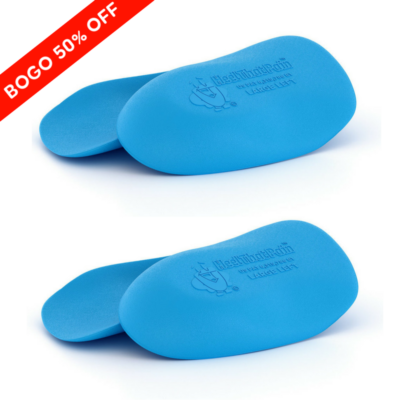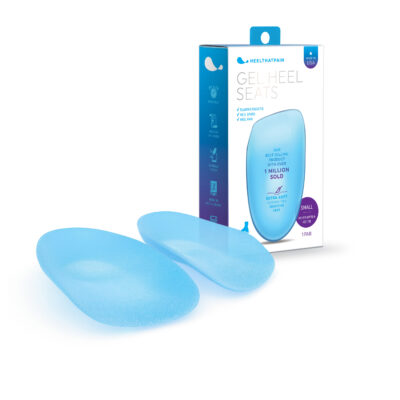Heel Spur Exercises
Heel spur exercises are a good way to help treat heel pain caused by heel spurs. With heel spur stretching exercises you are able to do two things: strengthen the plantar fascia and surrounding tissue and keep the fascia and other structures such as the Achilles tendon flexible. Each of these exercises will help lessen the severity of the heel pain, while also helping to prevent further occurrences of the heel spurs and other related conditions such as plantar fasciitis. Many people find that stretching and strengthening their heels in addition to wearing supportive orthotic inserts is the best way to treat heel pain conditions.
Heel Spurs Exercise #1
Lean forward against a wall with one knee straight and heel on the ground. Your other knee should be bent. Your heel cord and foot arch stretch as you lean. Hold for 10 seconds, relax and straighten up. Repeat 20 times for each sore heel. Be very careful not to continue if you experience any type of severe heel pain. It is always better to start slow and work into your heel spur exercises as you build your strength and tolerance.
This exercise is helpful because tight muscles in the calf can often lead to problems in other areas, such as in the heel of the foot. By stretching the calf and ankle, you can lessen the stress placed on the plantar fascia during movement as a result of a tight Achilles tendon or tight calf muscles. When this exercise is used, particularly before and after exercise, you can reduce the strain placed on the fascia and help to greatly reduce the chances of developing heel spurs.

Heel Spurs Exercise #2
In the second exercise, you lean forward onto a countertop, spreading your feet apart with one foot in front of the other. Flex your knees and squat down, keeping your heels on the ground as long as possible. Your heel cords and foot arches will stretch as the heels come up in the stretch. Hold for 10 seconds, relax and straighten up. Repeat 20 times.
Whereas the first exercise addressed other areas that can indirectly lead to heel spurs, this exercise helps to treat the specific area that becomes affected by excessive stress and causes heel spurs and plantar fasciitis. Again, this exercise can strengthen the heel and arch of the foot, and when used in combination with an orthotic device such as our Full-Length Heel Seats you can not only help to reverse the painful conditions but also help to keep these symptoms from developing again in the future.
These exercises are most effective when used in combination with another heel spur treatment method such as our powerful treatments. When used together, these techniques can reverse and heal the occurrence of heel spurs, plantar fasciitis, and other heel pain ailments, while also strengthening and increasing the flexibility of the heel, helping to prevent additional episodes of heel spurs in the long term.
Will Exercising Too Much Hurt My Feet?
Exercising, in some cases, can actually be the cause of heel spurs. Many people, particularly athletes, can often forget about proper foot care while training since they become focused on improving performance and increasing the intensity of their routine.
As a result, heel spurs begin to develop from exercises that place repetitive stress on the foot, particularly on the plantar fascia ligament along the bottom of the foot. This repetitive strain can cause the plantar fascia to pull away from the heel bone and lead to the development of a bone fragment on the heel which digs through tissue with every movement. Avoiding this type of pain can be done by wearing proper shoes during exercise. Sometimes shoes lead to heel spurs during exercise when they do not provide the right fit and the right amount of cushioning.
Although exercising improperly or with poor shoe support can cause heel spurs, there are techniques and special exercises for those who are currently suffering from the painful condition. By stretching prior to exercising you can help to increase flexibility and prevent injury.
There are several factors to consider when stretching prior to physical activity. First, it is important to do an even amount of stretching on both sides of the body in order to keep flexibility and strength building even. It’s also helpful when the muscles are relatively warm when you stretch and begin your exercise. Cold muscles are usually tighter and undergoing an intensive routine before they have properly warmed up increases the chances of injury. Take your time when stretching prior to exercise. Even though it can be easily forgotten when involved in a regular routine, stretching is a relatively simple and easy way to allow you to continue your exercise, and your daily lifestyle, injury-free.







